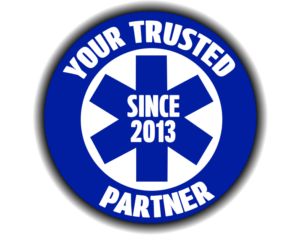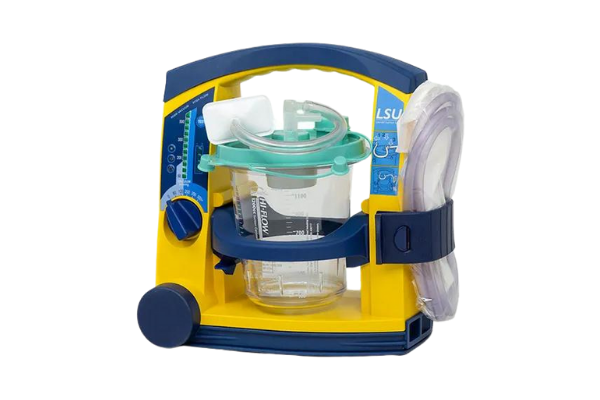No products in the cart.

Heat Exhaustion vs. Heat Stroke: Know the Warning Signs
It’s a scorching summer day, and you’ve been out in the sun, basking in its warm embrace. The heat envelops you, the sweat trickles down your forehead, and your body temperature starts to rise. But how do you know if you’re just experiencing a typical case of heat exhaustion or if you’re on the dangerous path toward a heat stroke?
The distinction between the two can be crucial, as heat strokes are responsible for an alarming statistic. According to the Centers for Disease Control and Prevention (CDC), an estimated 702 people die yearly in the United States due to heat-related illnesses.
So, it’s high time we delve into the warning signs of heat exhaustion and heat stroke, empowering you to protect yourself and your loved ones from these potentially life-threatening conditions. Let’s uncover the clues your body is trying to send you and ensure you stay cool, calm, and collected in the face of soaring temperatures.
What Is Heat Exhaustion?
Your body is a finely tuned machine, constantly working to regulate its temperature and keep you in balance. But when the heat becomes too intense, even the most efficient systems can start to falter. That’s when heat exhaustion creeps in.
Heat exhaustion is a condition that occurs when your body overheats due to prolonged exposure to high temperatures, coupled with inadequate fluid intake or dehydration. It’s often a result of strenuous physical activity under the scorching sun or spending extended periods of time in hot and humid environments.
When you’re exposed to excessive heat, your body sweats profusely in an attempt to cool down. This sweating leads to fluid loss, which, when not replenished adequately, can disrupt the delicate balance of electrolytes in your body. As a result, you may experience a range of symptoms that indicate your body is under stress.
Symptoms of Heat Exhaustion?
The symptoms of heat exhaustion include:
- Fatigue and weakness
- Dizziness and light-headedness:
- A pounding headache
- Nausea and vomiting
- Rapid heartbeat
- Pale or flushed skin
- In severe cases, heat exhaustion can lead to a loss of consciousness or fainting.
What Is Heat Stroke?
Heat stroke is a severe and potentially life-threatening condition that occurs when the body’s core temperature rises to dangerously high levels. Unlike heat exhaustion, heat stroke is a medical emergency that requires immediate attention.
Heat stroke typically develops when the body’s internal temperature reaches 104 degrees Fahrenheit (40 degrees Celsius) or higher. It can be caused by prolonged exposure to high temperatures, especially in combination with intense physical activity. It can also be triggered by a failure of the body’s cooling mechanisms due to dehydration or certain medical conditions such as multiple sclerosis, kidney failure, or stroke.
During a heat stroke, the body’s ability to regulate its temperature breaks down, and it becomes overwhelmed by the heat. This can lead to widespread damage to organs and tissues, putting your life at risk. It’s important to note that heat stroke can affect anyone, but certain factors such as age, underlying medical conditions, and medication use can increase the risk.
Symptoms of Heat Stroke
The symptoms of heat stroke can include:
- High body temperature: A core body temperature of 104 degrees Fahrenheit (40 degrees Celsius) or higher is a hallmark sign of heat stroke.
- Altered mental state: Confusion, disorientation, agitation, irritability, slurred speech, or even seizures can occur.
- Hot, dry skin: Unlike heat exhaustion, the skin may feel hot and dry as sweating may have ceased.
- Rapid or irregular heartbeat as the body struggles to cool down.
- A severe headache, often throbbing.
- Nausea and vomiting: The heat can cause gastrointestinal distress, leading to nausea and vomiting.
- Rapid and shallow breathing: Breathing may become fast and shallow as the body tries to cope with the heat.
- Muscle cramps and weakness: Muscles may cramp or become weak due to heat-induced strain.
- Loss of consciousness: In severe cases, heat stroke can lead to a loss of consciousness or coma.
What to Do If Someone Is Experiencing Heat-Related Illness
If someone shows signs of heat-related illness, it is important to act quickly. Move them into a cool place, such as a shady spot or an air-conditioned space. Provide them with cold beverages, but avoid sugary or alcoholic drinks. Apply cool compresses to their body and help them remove extra layers of clothing.
In addition, seek medical attention immediately if someone shows signs of heat stroke or any other serious heat-related illness. Do not try to guess the severity of their symptoms — it is best to err on the side of caution.
To avoid heat-related illnesses, ensure you check out Coast Biomedical Equipment for quality and effective cooling products like cooling vests, gel packs, and other accessories to help you stay cool.





